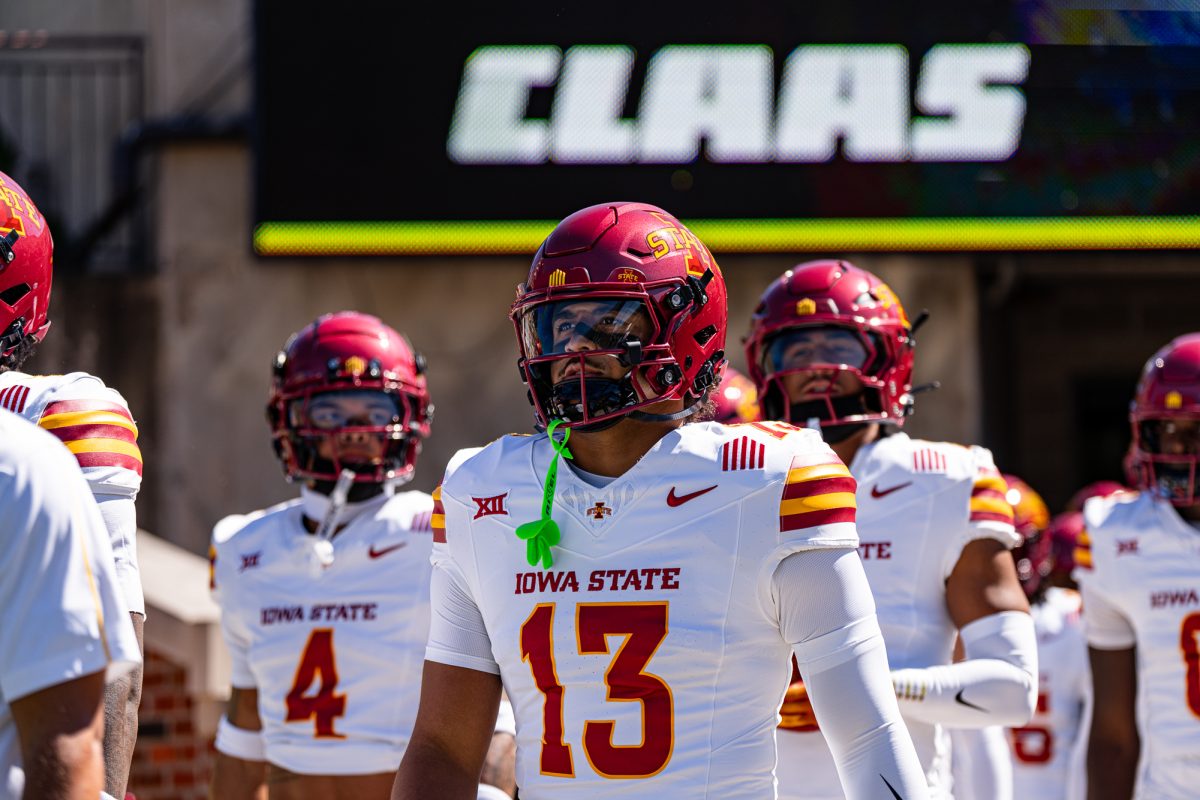Clairvoyant discusses her abilities, profession
November 3, 1997
Dressing in stereotypical flashy garb, complete with a crescent-moon headdress, clairvoyant Su Walker assured her audience she usually does not dress in such a costume.
“This isn’t what a psychic wears,” Walker said. “This is just what a psychic wears on Halloween.”
Walker, a 1981 Iowa State graduate in agriculture and a clairvoyant, talked to an audience of about 75 people in the lobby of Maple Main Thursday night.
Walker paced around the audience, who she instructed to sit in a circle around her, and discussed everything from her early childhood experiences with the paranormal to her work at “Inner Visions,” a business she operates out of her home in Ames.
Walker explained the definition of a “clairvoyant,” a profession occasionally met with staunch skepticism by non-believers.
“I’m a professional clairvoyant,” Walker said. “For those of you who don’t know what a clairvoyant is, it is a specific kind of psychic, [where one can see] clear, distinct, visual images.”
A psychic, Walker said, is a person who perceives things beyond the normal thought of five senses.
“It’s a little bit of something extra,” Walker said. “I tend to refer to it as multisensory instead of extrasensory, because I don’t think it’s extra in any of us. I think all of us have some kind of multisensory skills.”
She discussed telepathy and how it can work.
Walker, who is married to Clark Ford, an ISU professor in food science and ISU New Age Club adviser, said people only tend to have a telepathic relationship with people who they love.
“Don’t worry, I’m not reading all your thoughts right now,” Walker said.
Walker called clairvoyance a skill, and for a person to perfect this skill, they will have to work on it frequently.
“This is not just an innate, inborn ability,” Walker said.
Walker said after working on her skill, she has progressed from having to hold a person’s hand to get an image to just having their name and birth date to see visions of their future.
Walker also said it took her about six months to learn perfect meditation. She said to start to develop psychic powers, one should “play 20 questions with yourself.”
Walker said people tend to have the greatest amount of psychic ability in areas where they are most learned. Walker, who has a background in physiology, said one of her areas of expertise is medical information.
Walker said she did not fully comprehend her skill until she was in her 30s. She remembers having her first lucid dream, where she could control the outcome of the dream. By the age of 9, she had her first precognitive dream. By age 13, she could receive clear visions when she closed her eyes at night. When she was 17 years old, she had what she called an “out-of-body experience.”
The out-of-body experience entailed Walker leaving her body, floating high above the clouds and having a conversation with a being who came forth from the clouds.
“I could tell you almost verbatim what that person said, even 30 years later,” Walker said. “I don’t have an explanation for it.”
Having that experience, which Walker kept to herself for many years, caused her to read more about psychic abilities, and to join a meditation group, where others in the group started becoming aware of her talents.
Walker progressed to having group meetings with other clairvoyants. She said they would sit in a circle, not knowing one another, and tell each other intimate details about one another.
“It took me until I was 30 to figure out that a lot of those images were real,” Walker said. “For years, I thought they were my imagination. I thought everybody had them.”
Today, according to Inner Vision’s business brochure, Walker’s clientele includes psychiatrists, professors, physicians, attorneys and other professional people.
Walker has also worked for law enforcement agencies such as the FBI and private investigators all around the country. Her psychic powers are used in everything from murder cases to trying to catch serial rapists.
She said she only does cases like those on a volunteer basis because it sometimes involves her putting herself in a victim’s body, which is emotionally taxing.
“The images are so gruesome,” Walker said. “I don’t recommend [working on those cases] alone.”
After her presentation, Walker fielded questions from the audience about her work, and then offered to do some “mini-readings” for members of the audience who were willing to give their name, birth date and a specific question in front of the audience.
The majority of the questions were either related to career aspirations or whom the person would marry. After the question was asked, Walker would pace slowly, with an intent expression on her face. For some of the questions, Walker gave the date the person would get married, or the name of the person they would marry.
Carrie Seim, sophomore in journalism and mass communication, said she believed Walker’s prediction that she would get married by the year 2000 was accurate. “It’s something I’ll keep in mind,” she said.
Seim, who is also Richardson Court Association’s cultural and educational chair, was responsible for putting together Walker’s appearance.
“I was really impressed by the turnout,” Seim said. “Obviously this is an area students have an interest in. Also, Su is very down-to-earth, and you can tell she’s sincere.”






